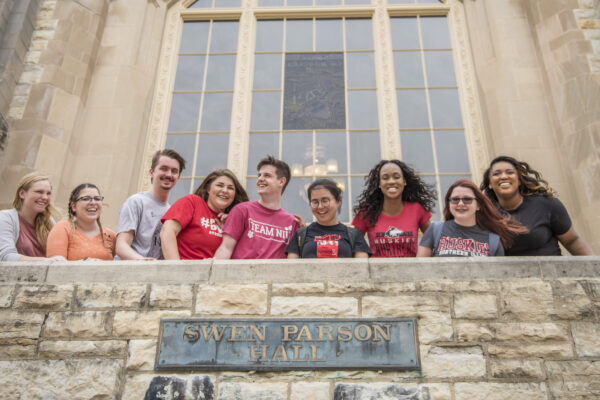This blog is part of a series highlighting the findings from Pulling Back the Curtain: Enrollment and Outcomes at Minority Serving Institutions.
Predominantly Black Institutions (PBIs) are not well understood in the higher education lexicon, despite serving a large number of students of color: namely, a large number of black or African American students.
One reason for this has to do with the relative newness of PBIs as a federally designated classification and a corresponding dearth of research on this unique institution type. The Center for Policy Research and Strategy at ACE recently released a report based on data from the National Student Clearinghouse (NSC) that examines enrollment and outcomes of students who start at minority serving institutions (MSIs). In looking beyond the numbers presented in this report, we share a more complete profile of PBIs and discuss some of the efforts these institutions have proposed to support their students.
When people think about colleges and universities that enroll large percentages of black students, they often think of Historically Black Colleges and Universities (HBCUs), a group of institutions that initially came into being in 1837. The emergence of PBIs is in fact very recent, first recognized by Congress through the Predominantly Black Institution Act of 2007. As that law states, PBIs play an essential and often mission-driven role in providing postsecondary access and training to low- and middle-income black and other minority students. Just one year later, the institutional category of PBIs officially emerged in the Higher Education Opportunity Act of 2008, the bill that reauthorized the Higher Education Act of 1965.
Unlike HBCUs, which are largely four-year institutions, the vast majority of the 156 PBIs are public two-year colleges. PBIs tend to be concentrated in the South, Midwest, and East, predominantly in urban areas. While most PBIs enroll a student body that is more than 50 percent black, some have a student body that is as much as 75 percent black. White and in some cases Latino students are usually the second largest racial group enrolled.
Like other MSIs, PBIs serve a population of students who are largely low-income and are often the first in their families to attend college. Given the changing demographics of the United States and the role of higher education in promoting upward mobility, PBIs play a critical role in their communities by providing access and credentials to an increasingly diverse student body.
Findings from the ACE report show that the majority of students at PBIs do not attend full time: Across sectors, the majority attend through mixed enrollment, moving between full-time and part-time enrollment. Looking at completion rates for students who enroll exclusively full time (the cohort most similar to that used to calculate federal graduation rates), the authors found:
- The NSC total completion rate for exclusively full-time students at public four-year PBIs was three times higher than that of the federal graduation rate – 51.5 percent compared to 16.6 percent.
- Exclusively full-time students at private four-year PBIs had a completion rate of 62.7 percent, more than double that of the federal rate of 30.5 percent.
- At public two-year PBIs, exclusively full-time students have a four-year completion rate of 37.4 percent, more than double the equivalent federal rate of 16.7 percent.
Completion rates at PBIs are much higher when analyzing NSC data because these data follow student movement across institutions and states, providing a more comprehensive picture.
Using resources and opportunities to support student success
Designation as an MSI under Title III of the Higher Education Opportunity Act made PBIs eligible for formula grants provided by the U.S. Department of Education. Within the federal PBI Program, these formula grants aim to strengthen institutional capacity to serve low- and middle-income black students. The PBI formula grant draws comparisons to other federal funding programs accessible to MSIs, such as the Developing Hispanic-Serving Institutions Program. Institutions that receive formula grants can use the funds to defray the cost of federally designated activities that support expanding educational opportunities for their students, such as faculty development, student support services and the development of academic programs.
A review of campus-generated abstracts from the institutions that received formula grant awards in FY 2016 establish a portrait of how PBIs function as drivers of educational excellence in the primary areas of retention and completion. While these efforts vary widely, they share a common purpose: to enhance and strengthen the college experience for low-income, first-generation black college students. Such work in turn can strengthen the ability of PBIs to serve all students, leading to increased student persistence and completion.
The federal grants will support a multitude of infrastructure and programmatic efforts, many of which have a sound evidence base showing their effectiveness in supporting at-risk students. A portion of the awarded funds is also intended to support black male academic and leadership development programs.
These efforts expand the ability of PBIs to cultivate high quality and engaging learning environments, which are critically important to student persistence and degree completion. The variability with which PBI awardees have been able to identify and respond to the needs of college-goers uniquely tie to each institutional mission and its particular locality. A few highlights of how PBI awardees said they planned to use their funding:
- Through its formula grant, Clayton State University (GA) will integrate institution-wide collaborations to improve student success under the Laker Bridge to Completion Program. Clayton State is seeking to expand its support for at-risk students through financial counseling services and online course completion options. It also will establish a tutoring service for underperforming students in writing; target career readiness to prepare students for internships and careers upon graduation; establish a black student mentor program, partnering students with community mentors; and create a match endowment fund for student scholarships.
- At Edgecombe Community College (NC), the PBI grant will fund two Student Success Centers, one on each of the college’s two campuses. Edgecombe will conduct community outreach and support its students through intrusive advising and structured scheduling. The funds will also be used to redesign developmental math and English courses. Finally, Edgecombe will create an initiative to improve retention and completion for black males.
- Trinity Washington University (DC) plans to use its PBI grant to buy laboratory instrumentation and technologies. Access to and utilization of new microscopes, imaging technologies, manikins and medical dosage simulators will improve students’ knowledge and skills, giving them a competitive advantage in the job market. Through these efforts, Trinity expects to see improved student outcomes including persistence, completion, job placement and entry into advanced degree programs for black science and nursing students.
The work of PBIs goes beyond their local communities, preparing students who may not otherwise access or complete higher education and contributing to national economic and workforce goals. PBIs have a role in helping to fulfill such goals and are uniquely positioned to do so. Much of the grant funding assists PBIs in preparing incoming students for college-level coursework, alerting them when students fall behind and assisting students in matriculation to four-year institutions.
In addition to formula grants, PBIs are also eligible to apply for federal competitive grants, also given through the Department of Education. These grants are designed to support the establishment or strengthening of programs in (1) science, technology, engineering and mathematics (STEM) education; (2) health education; (3) internationalization or globalization; (4) teacher preparation; and (5) improving educational outcomes among black males.
While there is a dearth of empirical research on PBIs, the ACE report adds to a growing body of work on these important institutions and their role in facilitating access to and success in higher education for low-income, first-generation black collegians and other students of color. But while these data fill a gap in the research, more research is still needed to fully understand how the programs, services and institutional qualities of PBIs influence outcomes for the students they serve.
If you have any questions or comments about this blog post, please contact us.




